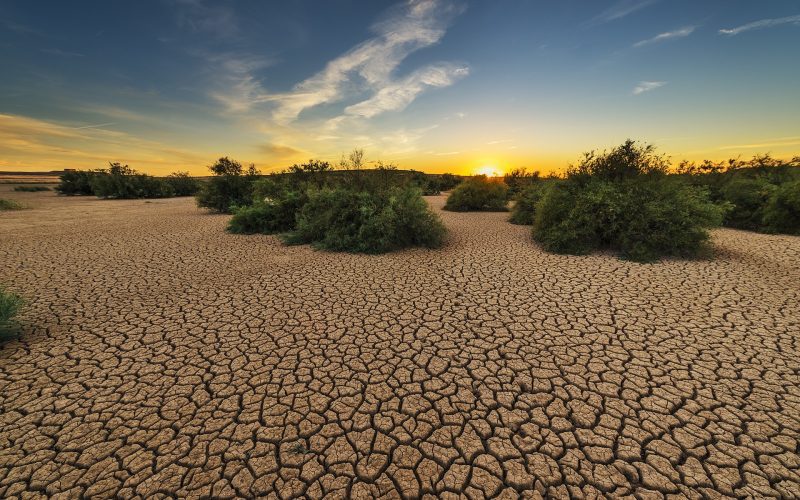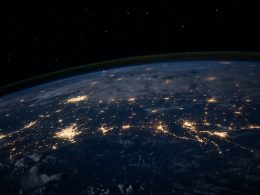Climate change is no longer a distant threat but an imminent crisis that demands our immediate attention. One of the most devastating impacts of climate change is its ability to amplify drought conditions worldwide, causing severe water scarcity and food insecurity. With each passing day, we witness more and more regions grappling with long-term droughts, leading to social unrest, economic hardships, and ecological damage. In this blog post, we’ll explore how climate change worsens drought conditions across the globe and why urgent action is necessary to mitigate its disastrous consequences.
What is climate change?
Climate change is a complex and multifaceted phenomenon that refers to long-term shifts in global weather patterns caused by human activities. The primary driver of climate change is the increasing concentration of greenhouse gases, such as carbon dioxide and methane, in the atmosphere due to burning fossil fuels for energy, deforestation, and industrial processes.
As these gases accumulate in the atmosphere, they trap heat from the sun that would otherwise radiate back into space. This trapped heat causes temperatures to rise globally and leads to changes in precipitation patterns, sea levels, ocean acidity, and extreme weather events like droughts, floods or wildfires.
Climate change affects not only natural systems but also human societies on every continent. It poses significant risks to public health through air pollution or spread of disease vectors. Climate change also threatens food security causing crop failures or water scarcity leading communities towards poverty and displacement.
Despite global efforts to reduce emissions through clean energy transitions or other strategies at all levels – from individuals up to governments – the reality is that we are already experiencing its impacts across many regions with unprecedented intensity.
How does climate change worsen drought conditions?
Climate change is causing drought conditions to worsen around the world. Rising temperatures accelerate evaporation, which in turn reduces water availability and increases the risk of drought. Additionally, climate change alters rainfall patterns, causing more frequent and severe droughts in some areas.
One of the most significant impacts of climate change on drought conditions is through extreme weather events such as heatwaves and prolonged periods of high temperatures. These events cause soil moisture to evaporate rapidly, leading to a reduction in available water for plants and animals.
Climate change also affects snowpack levels that contribute significantly to freshwater resources worldwide. As temperatures rise, snow melts earlier than usual or does not accumulate at all; this results in less meltwater flowing into rivers during spring months when it’s needed most.
Furthermore, changes in precipitation patterns caused by climate change can lead to longer dry spells between downpours – these can be devastating for crops already struggling with reduced access to water sources.
In summary, Climate Change exacerbates Drought by intensifying temperature extremes which affect freshwater reserves essential for humans’ livelihoods and agriculture activities while altering established rain patterns ultimately culminating extended dry seasons globally.
Why is drought a global problem?
Drought is a global problem because it affects not just one region or country but several nations around the world. With climate change leading to hotter and drier weather patterns, droughts are becoming more frequent and severe. This has negative impacts on agriculture, which in turn can lead to food insecurity.
Drought also affects water resources, with many regions experiencing water scarcity due to lack of rainfall. This can lead to conflicts over limited water supplies, as seen in areas such as the Middle East and Africa.
Moreover, drought conditions can cause wildfires that destroy ecosystems and put human lives at risk. In addition, drought has economic consequences by affecting industries such as tourism, forestry and fishing.
The effects of drought are not limited to developing countries either; developed nations like Australia have experienced devastating droughts in recent years. It is clear that addressing the issue of drought requires a coordinated effort from all countries worldwide.
What can be done to address drought conditions?
The good news is that there are several ways to address drought conditions, although some require larger-scale efforts than others.
One of the most effective solutions is to reduce greenhouse gas emissions by transitioning away from fossil fuels and towards renewable energy sources like wind and solar power. This would help slow down the rate of climate change, which in turn could help prevent or mitigate future droughts.
Another strategy is to promote sustainable water management practices, such as rainwater harvesting, greywater recycling, and drip irrigation systems. By using water more efficiently and reducing waste, we can stretch our limited resources further and ensure they’re being used where they’re needed most.
On a smaller scale, individuals can make a difference by conserving water at home through simple actions like fixing leaks, taking shorter showers, and turning off the tap while brushing their teeth. Planting native species in gardens can also help conserve water while supporting local ecosystems.
Ultimately though, addressing drought conditions will require a collective effort from governments, businesses, communities and individuals around the world. It’s up to each of us to do what we can within our own spheres of influence to support this critical cause.
Conclusion
It is clear that climate change is causing devastating impacts on the availability of water resources around the world. The amplification of drought conditions can lead to severe consequences for both human societies and natural ecosystems.
It is essential that we take immediate action to mitigate these effects by reducing our greenhouse gas emissions, implementing sustainable land use practices, improving water management strategies and investing in clean energy technologies.
By working together as a global community, we can address this urgent issue and ensure a more resilient future for all. It’s time to act now before it’s too late.











